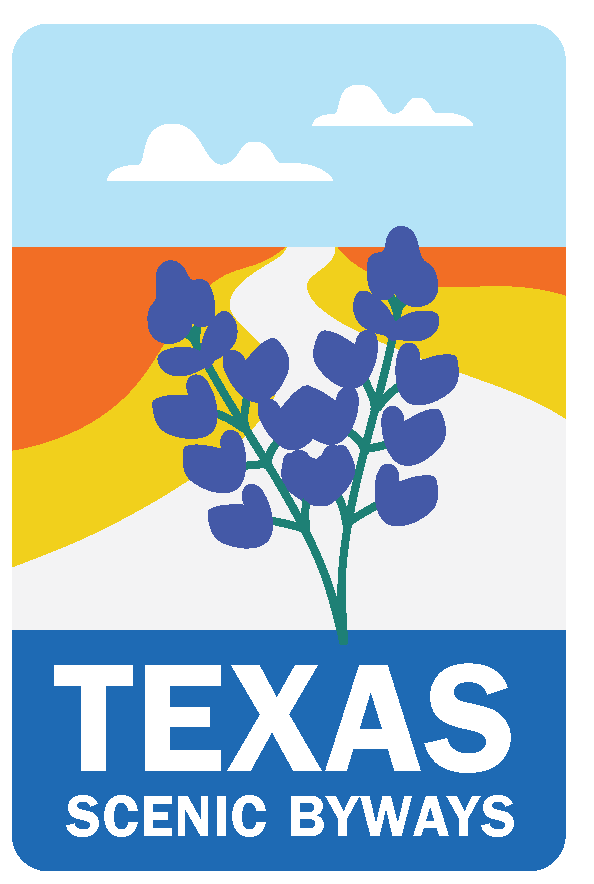The Texas Scenic Byways Program was initiated by Senate Bill 941 (SB 941) during the 87th Regular Session. The program allows TxDOT to receive nominations for State Scenic Byways, nominations for National Scenic Byways, and applications for federal grant funding. It also allows participation by governmental entities and eligible community organizations and facilitates their participation in the National Scenic Byways Program under Title 23, Section 162, United States Code.
This program recognizes select corridors that possess intrinsic qualities, as defined by FHWA:
Archaeological Quality involves those characteristics of the scenic byways corridor that are physical evidence of historic or prehistoric human life or activity that are visible and capable of being inventoried and interpreted. The scenic byway corridor's archeological interest, as identified through ruins, artifacts, structural remains, and other physical evidence have scientific significance that educate the viewer and stir an appreciation for the past.
Cultural Quality is evidence and expressions of the customs or traditions of a distinct group of people. Cultural features including, but not limited to, crafts, music, dance, rituals, festivals, speech, food, special events, vernacular architecture, etc., are currently practiced. The cultural qualities of the corridor could highlight one or more significant communities and/or ethnic traditions.
Historic Quality encompasses legacies of the past that are distinctly associated with physical elements of the landscape, whether natural or manmade, that are of such historic significance that they educate the viewer and stir an appreciation for the past. The historic elements reflect the actions of people and may include buildings, settlement patterns, and other examples of human activity. Historic features can be inventoried, mapped, and interpreted. They possess integrity of location, design, setting, material, workmanship, feeling, and association.
Natural Quality applies to those features in the visual environment that are in a relatively undisturbed state. These features predate the arrival of human populations and may include geological formations, fossils, landform, water bodies, vegetation, and wildlife. There may be evidence of human activity, but the natural features reveal minimal disturbances.
Recreational Quality involves outdoor recreational activities directly association with and dependent upon the natural and cultural elements of the corridor's landscape. The recreational activities provide opportunities for active and passive recreational experiences. They include, but are not limited to, downhill skiing, rafting, boating, fishing, and hiking. Driving the road itself may qualify as a pleasurable recreational experience. The recreational activities may be seasonal, but the quality and importance of the recreational activities as seasonal operations must be well recognized.
Scenic Quality is the heightened visual experience derived from the view of natural and manmade elements of the visual environment of the scenic byway corridor. The characteristics of the landscape are strikingly distinct and offer a pleasing and most memorable visual experience. All elements of the landscape -- landform, water, vegetation, and manmade development -- contribute to the quality of the corridor's visual environment. Everything present is in harmony and shares in the intrinsic qualities.

Roadway segments eligible for designation as a Texas Scenic Byway are listed in Section 391.252, Transportation Code.
TxDOT will facilitate applications for National Scenic Byway designation and/or grant funding when the Federal Highway Administration announces a call for applications. Visit FHWA’s National Scenic Byways Program for more information.
Resources
- State Scenic Byway Application
- Program Guidelines
- Administrative Rules
- Map of Eligible Roadways
- Interactive Map of Eligible Roadways
Contact us with any additional questions.